Have you ever wondered why Japanese milk bread is unbelievably soft and fluffy, almost like biting into a cloud? This beloved bread, known as Shokupan in Japan, is celebrated for its delicate texture, slight sweetness, and incredible pull-apart layers. Unlike ordinary loaves, Japanese milk bread retains its pillowy softness for days, thanks to the tangzhong method—a time-tested technique that gelatinizes flour and water to lock in moisture. Whether you're crafting the ultimate sandwich or enjoying it toasted with butter, this bread is a staple in Japanese bakeries and home kitchens alike.

Why You'll Love This Japanese Milk Bread
Craving the softest, fluffiest bread that melts in your mouth? This homemade Shokupan recipe brings bakery-quality Japanese milk bread straight to your kitchen, with a stunning golden crust and a cloud-like interior. Whether you're a beginner or a seasoned baker, these clear, foolproof steps guarantee a perfectly fluffy loaf every single time.
But Japanese milk bread isn’t just about texture—it’s about versatility. Enjoy it fresh with butter, craft the ultimate sandwich, or turn it into the best French toast you've ever had. Once you experience the magic of homemade Shokupan, you’ll never go back to store-bought bread again!
Jump to:
Ingredients
The Tangzhong:
- Bread flour
- Whole milk

The Bread Dough:
- Bread flour
- Granulated sugar
- Active dry yeast or instant yeast
- Salt
- Warm milk
- Large egg, at room temperature
- Unsalted butter, softened
- Milk for brushing the top (optional)

See recipe card for quantities.
Instructions
Prepare the Tangzhong
- In a small saucepan, whisk together the bread flour and milk until no lumps remain.
- Heat the mixture over medium-low heat, stirring constantly with a spatula.
- Continue stirring until the mixture thickens to a paste-like consistency (about 3-5 minutes). You'll know it's ready when lines appear in the mixture as you stir.
- Remove from heat and transfer to a small bowl. Cover with plastic wrap, pressing it directly onto the surface of the tangzhong to prevent a skin from forming.
- Allow the tangzhong to cool to room temperature before using it in your dough.
Prepare the Dough
- In the bowl of your stand mixer, combine the bread flour, sugar, yeast, and salt. Mix briefly to combine.
- Add the tangzhong, warm milk, and egg to the dry ingredients.
- Attach the dough hook and mix on low speed until the ingredients come together into a rough dough, about 2 minutes.
- Increase the speed to medium-low and knead for about 5 minutes until the dough becomes smoother.
- Add the softened butter in small pieces while the mixer is running.
- Continue kneading for 7-10 minutes until the dough becomes smooth, elastic, and pulls away from the sides of the bowl. The dough will be soft and slightly sticky.
First Rise
- Shape the dough into a ball and place it in a lightly greased bowl.
- Cover with plastic wrap or a damp kitchen towel.
- Allow the dough to rise in a warm, draft-free place until doubled in size, about 1 to 1.5 hours depending on the temperature of your kitchen.
Shaping the Loaf
- Once the dough has doubled, gently punch it down to release air bubbles.
- Transfer the dough to a lightly floured surface and divide it into 3 equal portions. A kitchen scale is helpful here for precision.
- Shape each portion into a ball and let them rest for 15 minutes, covered with a damp cloth. This relaxes the gluten and makes the dough easier to shape.
- After resting, flatten each ball into an oval shape with your hands, roughly 6×8 inches.
- Fold the top third of the oval down toward the center, then fold the bottom third up over it, like folding a letter.
- Roll the folded dough up from one short side to the other, creating a small cylinder.
- Place the shaped pieces, seam side down, side by side in a greased loaf pan.
Second Rise
- Cover the loaf pan with plastic wrap or a damp kitchen towel.
- Allow the dough to rise again until it reaches about 1 inch above the rim of the pan, approximately 45-60 minutes.
- Toward the end of the rising time, preheat your oven to 350°F (175°C).
Baking
- Gently brush the top of the risen dough with milk for a shiny, golden crust.
- Bake in the preheated oven for 30-35 minutes, or until the bread is golden brown and sounds hollow when tapped on the bottom.
- If the bread is browning too quickly, tent it with aluminum foil during the last 10 minutes of baking.
- Remove from the oven and immediately turn out onto a wire rack.
- Let the bread cool completely before slicing to allow the texture to set properly.

- Step 1: Cook bread flour and water in a saucepan, stirring until thick. Let cool.
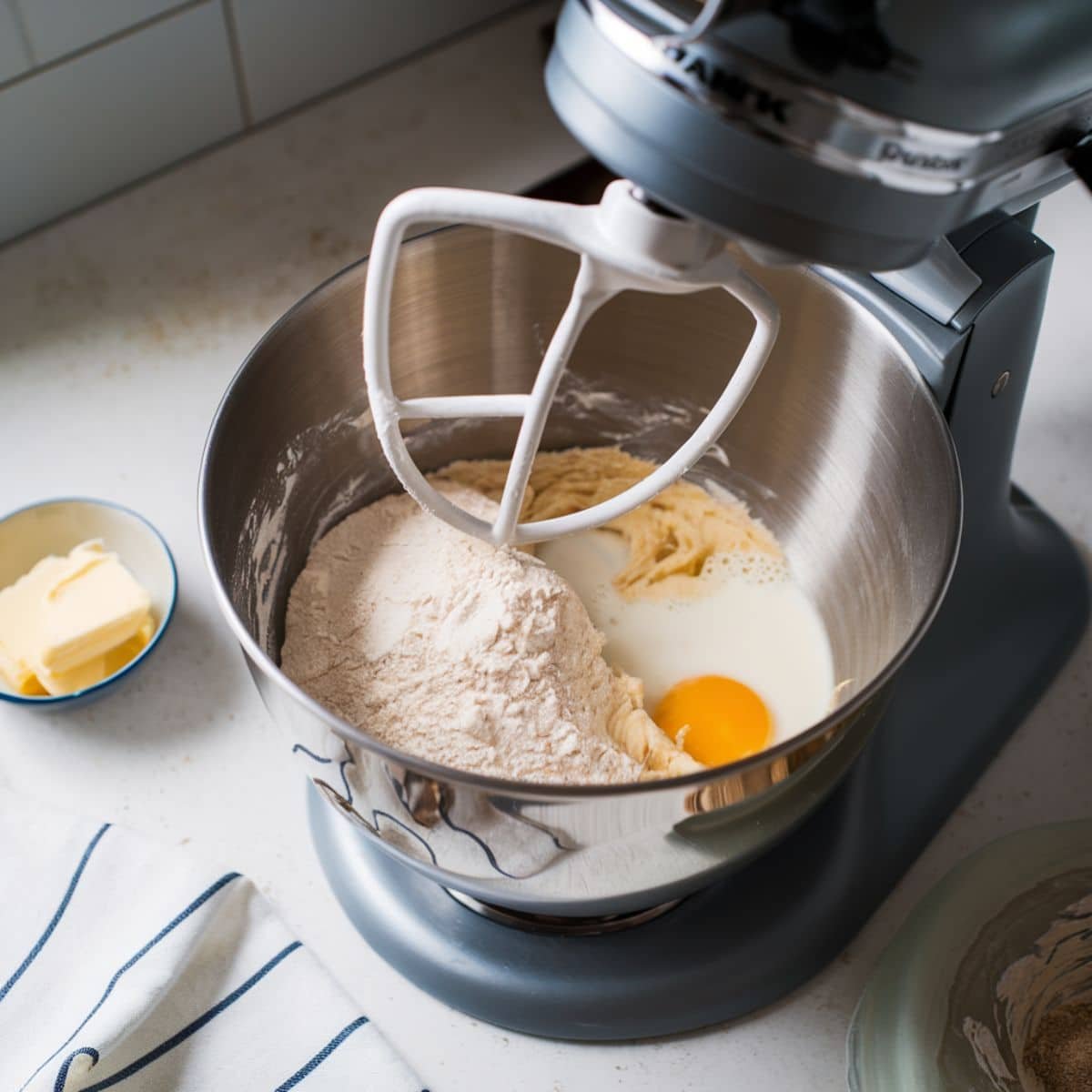
- Step 2: Dough ingredients are combined in a mixer bowl, ready for kneading.

- Step 3: The dough is resting in a greased bowl, covered and rising until doubled.

- Step 4: Dough is divided, shaped, and rolled before being placed in the loaf pan.

- The dough has risen fully in the loaf pan, ready for baking.
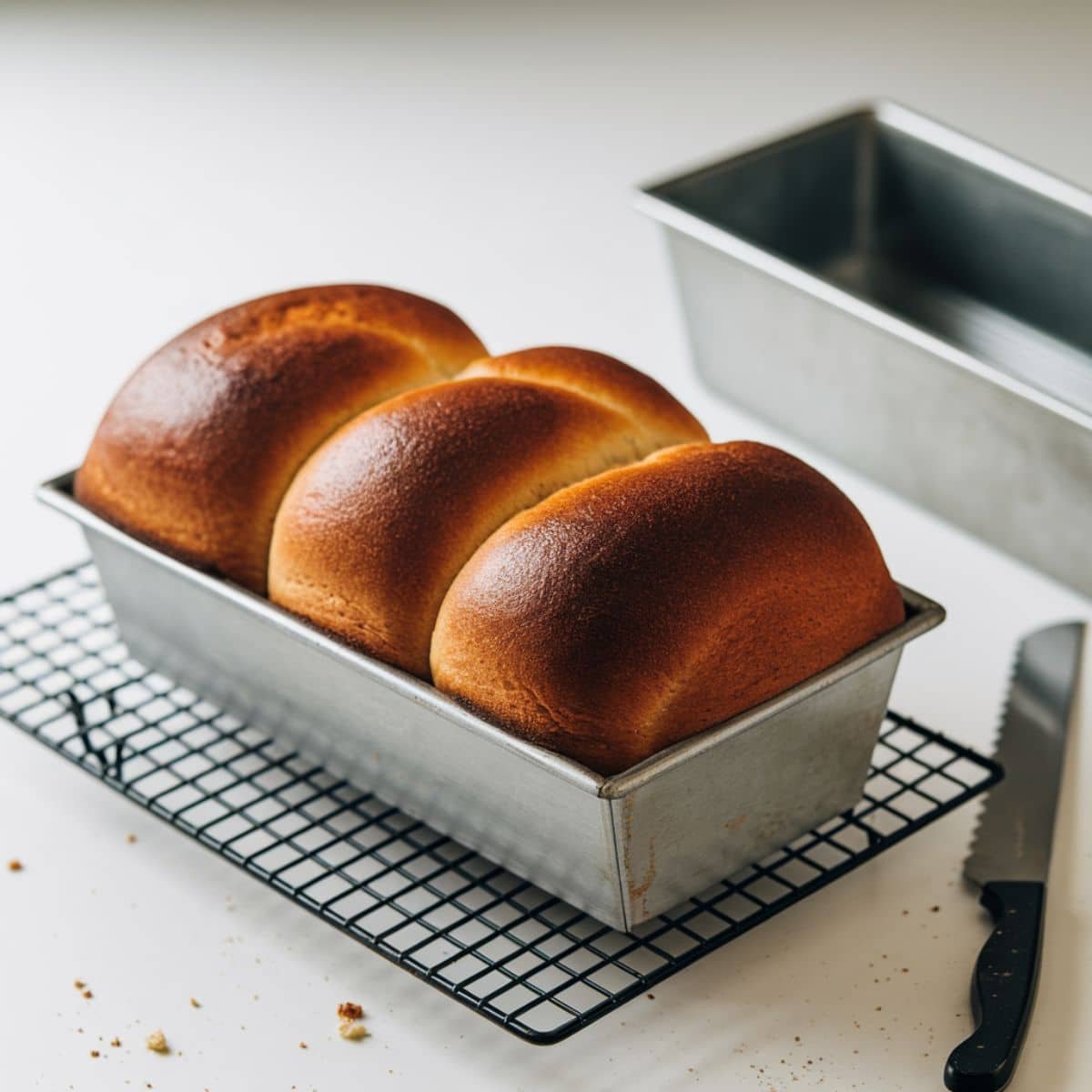
- The freshly baked Shokupan loaf cools on a wire rack, showing its soft texture.
Equipment For Japanese Milk Bread
- Pastry brush for milk wash
- Stand mixer with dough hook attachment (or you can knead by hand)
- Medium saucepan for tangzhong
- Loaf pan (9×5 inch or pullman loaf pan for authentic shape)
- Mixing bowls
- Kitchen scale (recommended for precision)
- Plastic wrap or damp kitchen towel
Variations
- Hokkaido Milk Bread: For an even richer version, replace some of the milk with heavy cream.
- Vegan Japanese Milk Bread: Substitute the milk with soy or oat milk, the butter with plant-based butter, and the egg with 3 tablespoons of aquafaba (chickpea liquid).
- Whole Wheat Option: Replace up to ⅓ of the bread flour with whole wheat flour. Note that this will produce a slightly denser loaf with a nuttier flavor.
- Gluten-Free Japanese Milk Bread: While challenging, you can attempt this with a high-quality gluten-free flour blend that contains xanthan gum, plus adding 1 tablespoon of milk powder for tenderness.
- Sourdough Japanese Milk Bread: Reduce the yeast to 1 teaspoon and add 100g of active sourdough starter to the dough for a slight tang.
- Japanese Condensed Milk Bread: Replace 2 tablespoons of the sugar with 3 tablespoons of sweetened condensed milk for an even more tender, sweet result.tent link)
Hints for Perfect Japanese Milk Bread
For the best results, weigh your ingredients with a kitchen scale rather than using volume measurements. Bread making is a science, and precision matters for consistent results.
The tangzhong can be made ahead of time and stored in the refrigerator for up to 24 hours. Just bring it to room temperature before using it in your dough.
If you're kneading by hand, resist the urge to add too much extra flour. The dough should be soft and slightly tacky, but not dry. Kneading will take about 10-15 minutes by hand to develop proper gluten.
The softened butter should be at room temperature but not melted. It should be soft enough to easily incorporate into the dough.
Dietary Benefits & Serving Suggestions
Japanese milk bread is enriched with both milk and butter, making it higher in protein and calcium than many other bread varieties. The soft texture also makes it an excellent choice for children or those who prefer gentler bread.
For a balanced breakfast, serve toasted milk bread with scrambled eggs and fresh fruit. The slight sweetness of the bread complements both sweet and savory toppings.
For lunch, make Japanese-style sandwiches (sandos) with perfectly square slices filled with egg salad, tuna, or katsu (fried pork cutlet). The soft texture won't overpower your fillings.
For dessert, thick slices of milk bread make exceptional French toast or bread pudding due to their already tender texture and hint of sweetness.
Storage
Japanese milk bread stays fresh longer than typical homemade bread thanks to the tangzhong method. Store it in an airtight container or bread bag at room temperature for up to 4 days.
For longer storage, slice the completely cooled bread and freeze it with parchment paper between slices for up to 3 months. Defrost slices as needed or toast them directly from frozen.
Avoid storing milk bread in the refrigerator, as this will actually accelerate staling.
The Secret to Bakery-Perfect Japanese Milk Bread: A Hidden Technique
There’s a secret that every master baker knows when crafting the perfect Japanese milk bread—and it’s all in the kneading. The first time I made this bread, I rushed through the process, eager to taste that soft, cloud-like texture. But the result? A dense loaf that lacked the signature fluffiness I craved. That’s when I discovered the true key to Shokupan’s magic: patience.
The dough must be kneaded until it transforms—silky smooth, elastic, and strong enough to pass the "windowpane test"—where you can stretch it so thin that light shines through. This isn’t just a small detail; it’s the foundation of the bread’s airy, melt-in-your-mouth crumb. Each extra minute of kneading develops the gluten network that traps air, creating those pillowy layers that make Japanese milk bread legendary.
FAQ
What makes Japanese milk bread different?
Japanese milk bread, also known as Shokupan, is unique due to its incredibly soft and fluffy texture, which is achieved through the tangzhong method. This technique involves pre-cooking a portion of the flour with liquid to gelatinize the starches, allowing the bread to retain more moisture. This results in a tender crumb that stays fresh longer than typical homemade loaves
What makes Japanese milk bread so fluffy?
The secret to the fluffiness of Japanese milk bread is the tangzhong method. By pre-gelatinizing some of the starches in the flour with heated milk and flour paste, the bread can hold more moisture. This process creates an exceptionally soft and fluffy texture that remains fresh for days
What is the difference between brioche and Japanese milk bread??
While both brioche and Japanese milk bread are enriched breads, they differ in ingredients and texture. Brioche contains a higher amount of butter and eggs, giving it a richer taste and a more yellow color. In contrast, Japanese milk bread uses the tangzhong method and typically has less butter, resulting in a lighter, fluffier texture and a milder flavor
Is Hawaiian bread similar to Japanese milk bread?
Hawaiian bread and Japanese milk bread share similarities in their soft and slightly sweet characteristics. However, Hawaiian bread often includes pineapple juice, which adds a unique sweetness and subtle tropical flavor. On the other hand, Japanese milk bread relies on the tangzhong method to achieve its signature fluffy texture without the fruity undertones
Bringing Bakery-Quality Japanese Milk Bread to Your Kitchen
Once you’ve mastered this Japanese milk bread recipe, you’ll see why Shokupan is not just a bread—it’s an experience. With its cloud-like softness and delicate sweetness, this loaf becomes the perfect canvas for both simple pleasures and indulgent creations. Whether you’re spreading it with butter and jam, crafting the ultimate sandwich, or turning it into an unforgettable French toast or bread pudding, every bite brings a taste of authentic Japanese bakery magic into your home.
Now it’s your turn! Bake this fluffy Japanese milk bread this weekend, and let us know how it turned out in the comments. Have you experimented with different variations? Share your favorite ways to enjoy milk bread!
If you loved this recipe, you might also enjoy our Homemade Bread Bowl Recipe for hearty soups or our Decadent Chocolate Waffles Recipe for a sweet breakfast treat!
Related
Looking for other recipes like this? Try these:
Pairing
These are my favorite dishes to serve with Japanese Milk Bread.

Japanese Milk Bread Recipe
Equipment
- 1 Stand mixer With dough hook attachment or kneading by hand
- 1 Medium saucepan For preparing tangzhong
- 1 Loaf pan 9×5 inch or Pullman loaf pan for authentic shape
- 2-3 Mixing bowls For dough preparation
- 1 Kitchen scale Recommended for precision
- 1 Plastic wrap Or damp kitchen towel for covering dough
- 1 Pastry brush For brushing milk on top
Ingredients
For the Tangzhong:
- 3 tablespoon bread flour
- ½ tablespoon whole milk
For the Bread Dough:
- 2 ½ cups bread flour
- ¼ cup granulated sugar
- 2 ¼ teaspoon active dry yeast Or instant yeast
- 1 teaspoon salt
- ½ cup warm milk ~110°F (43°C)
- 1 large egg At room temperature
- 3 tablespoon unsalted butter Softened
- 1 tablespoon milk For brushing (optional)
Instructions
- Whisk flour & milk in a saucepan until smooth.
- Cook over medium-low heat, stirring until thick (3-5 min).
- Transfer to a bowl, cover with plastic wrap, and let cool.
- Mix flour, sugar, yeast, salt in a bowl.
- Add tangzhong, milk, egg, and mix until combined.
- Knead for 5 minutes, then add butter in pieces.
- Continue kneading until smooth & elastic (7-10 min).
- Shape dough into a ball and place in a greased bowl.
- Cover and let rise until doubled (~1-1.5 hrs).
- Divide dough into 3 equal pieces and rest for 15 min.
- Flatten each into an oval, fold in thirds, roll into logs.
- Place logs seam-side down in a greased loaf pan.
- Cover and let rise until 1 inch above pan (~45-60 min).
- Preheat oven to 350°F (175°C).
- Brush with milk wash, bake for 30-35 min.
- If browning too fast, tent with foil last 10 min.
- Cool on a wire rack before slicing.


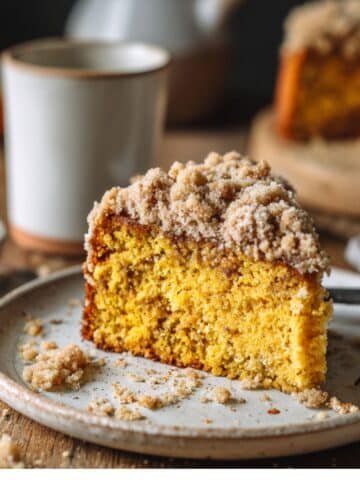
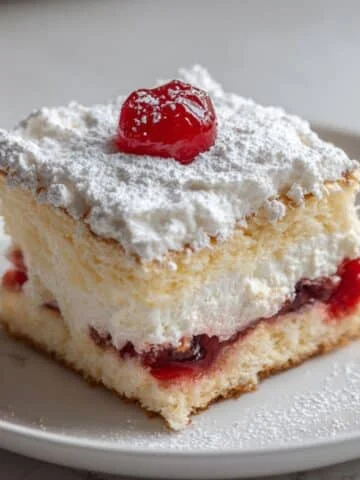
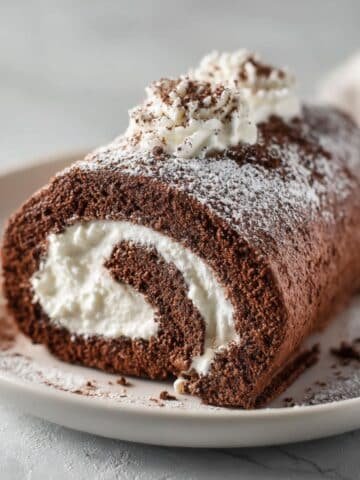
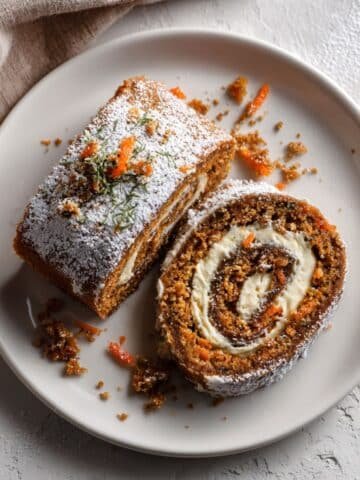



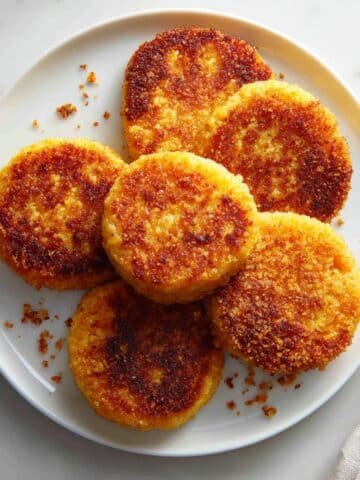

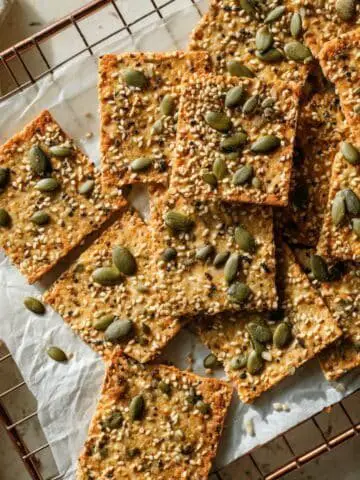
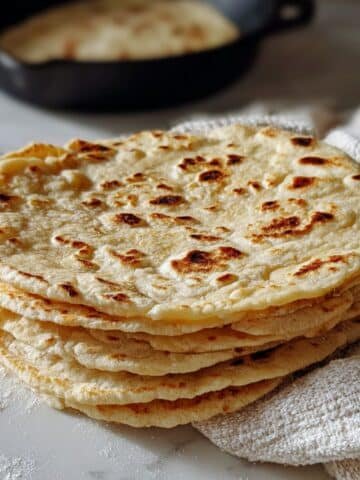
Leave a Reply